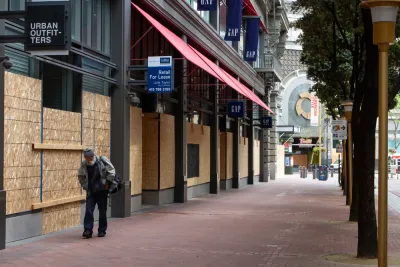Among unwelcome lessons of COVID-19 is growing evidence of what was already broken in politics and business. Ben Brown looks at making bold changes in order to improve the lives of the left out and left behind.

"This is the first of several posts planned for the next few weeks on lessons we’re learning from the pandemic and how local and regional governments might respond – not only to the crisis itself, but also to weaknesses in policies and processes COVID-19 exposed.
"Let’s start with an understatement: Community development leaders – whether they’re in government, non-profits, or the private sector — are likely to remember this time as the most challenging of their lives. Every hard choice is harder, every strategy fraught with uncertainty.
"At the moment, we’re upping the anxiety and the stakes for decision-making as governors in a majority of states bow to pressure to lift stay-at-home restrictions that were intended to slow the spread of COVID-19. Ahead is a series of uncoordinated experiments that will produce as-yet-unknown outcomes everywhere. Officials are betting lives and economies on assumptions that are at once wishful thinking and probably inevitable. We can’t expect people to hide in their homes forever.
"Response to the pandemic is a global challenge. But impacts are felt most quickly and most dramatically in local and regional jurisdictions where people live and work and where Americans tell pollsters they have the most faith in government. It’s also where the resources for responding to the crisis are most threatened."
Brown discusses the leaky pipes of both physical infrastructure and policy, and how doing the biggest little thing may help us deal with the uncomfortable realities and the barriers that must be overcome.
FULL STORY: After the Plague: Go Big or Go Backwards?

National Parks Layoffs Will Cause Communities to Lose Billions
Thousands of essential park workers were laid off this week, just before the busy spring break season.

Retro-silient?: America’s First “Eco-burb,” The Woodlands Turns 50
A master-planned community north of Houston offers lessons on green infrastructure and resilient design, but falls short of its founder’s lofty affordability and walkability goals.

Delivering for America Plan Will Downgrade Mail Service in at Least 49.5 Percent of Zip Codes
Republican and Democrat lawmakers criticize the plan for its disproportionate negative impact on rural communities.

Test News Post 1
This is a summary

Test News Headline 46
Test for the image on the front page.

Balancing Bombs and Butterflies: How the National Guard Protects a Rare Species
The National Guard at Fort Indiantown Gap uses GIS technology and land management strategies to balance military training with conservation efforts, ensuring the survival of the rare eastern regal fritillary butterfly.
Urban Design for Planners 1: Software Tools
This six-course series explores essential urban design concepts using open source software and equips planners with the tools they need to participate fully in the urban design process.
Planning for Universal Design
Learn the tools for implementing Universal Design in planning regulations.
EMC Planning Group, Inc.
Planetizen
Planetizen
Mpact (formerly Rail~Volution)
Great Falls Development Authority, Inc.
HUDs Office of Policy Development and Research
NYU Wagner Graduate School of Public Service




























